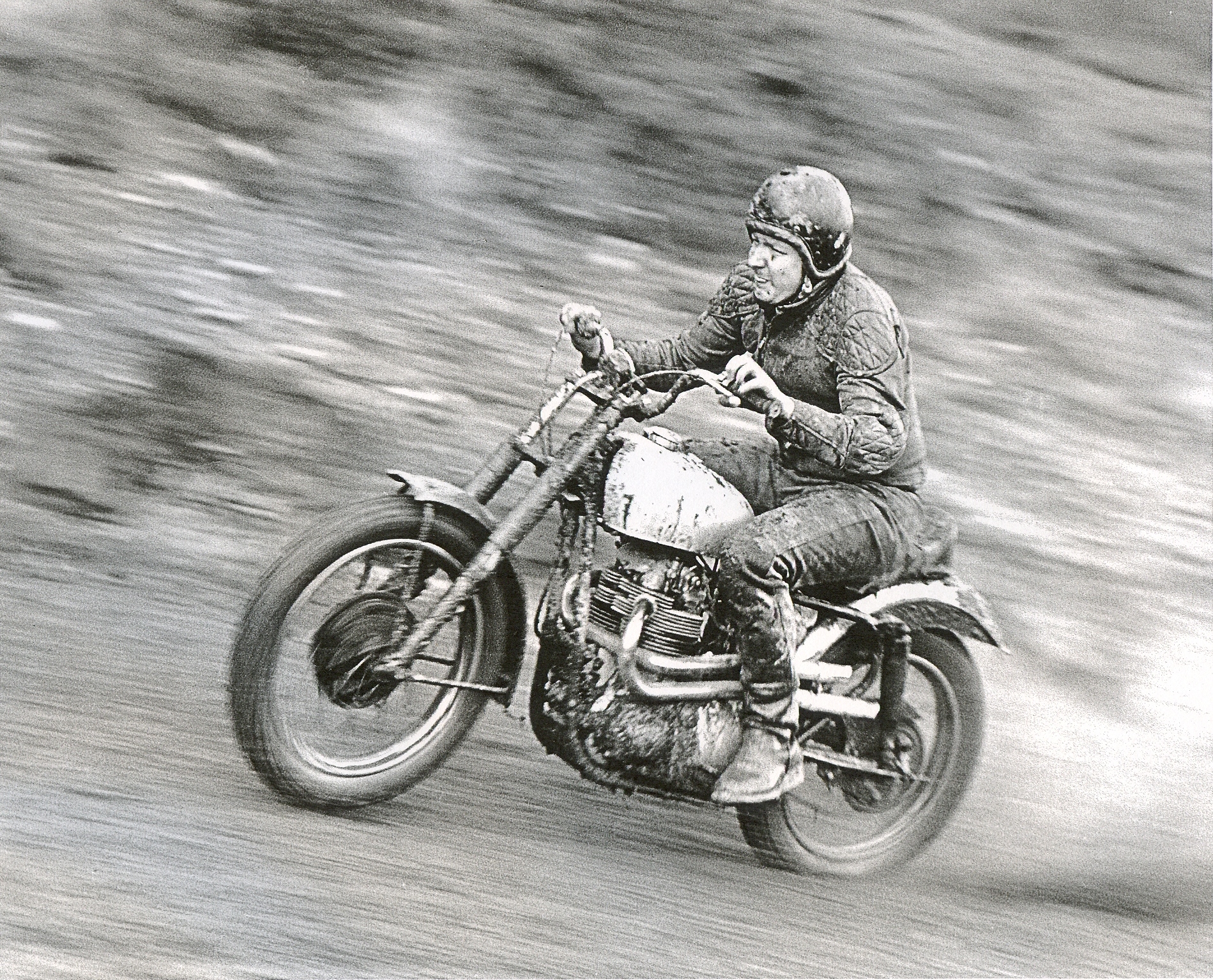From gentleman’s activity to rebel trademark, a sartorial history of motorcycling.
Prior to the first World War, motorcycling was an activity favored by society’s leisure class. Wearing a tweed suit with a waistcoat and long duster jacket was au courant, and often worn atop a bike. Luckily for those early riders who happened to crash, motorcycles at the time were basically bicycles with motors attached, and rarely reached speeds over 30 k/hr.
By 1914, with the start of the War, thousands of motorcycles were produced throughout the world for military use. U.S. servicemen atop a motorcycle wore a uniform almost identical to the U.S. Cavalry uniforms – the shirts, gauntlets, pants (or jodhpurs), and boots were all the same. Long duster coats, which tended get caught dangerously in the wheels, were replaced by waist-length jackets. Cavalry uniforms provided a degree of protection and comfort, as needed mobility on a motorcycle was considered similar to that needed to ride a horse. In place of a protective helmet, military caps or soft leather or canvas aviator caps were worn, often with riding googles.

Not as popular today, kidney belts were an absolute necessity in the 1920s and 30s, with the rough roads motorcyclists had to ride before the arrival of full suspension systems. These belts were commonly decorated with jewels, tacks, hand painting or embossing—becoming Americana folk art—and are now coveted by collectors. Harley Davidson and Indian dealerships even offered matching kidney belts and saddlebags to stay on top of the trend.
A motorcycle helmet is unarguably the most important piece of motorcycle gear to be worn when riding. The first motorcycle helmet was invented by Gottlieb Daimler in the late 19th century, for his ‘Riding Car’ prototype, but with only cotton batting as padding, it wasn’t built for speed. The Daimlet Reitwagen ‘Riding Car’ was capable of speeds only up to 12km/h. As motorcycle speeds increased, the fatalities increased in parallel. It wasn’t until 1935, when the infamous journalist T. E. Lawrence, or ‘Lawrence of Arabia’, crashed his Brough Superior and died from the resulting head injuries, that the world of motorcycling took action to address the need for adequate head protection. One of the doctors that attended to Lawrence was Hugh Cairns, who began an extensive study of head injuries resulting from riding. Cairns faced a lot of setbacks when conducting his research, the biggest being that he could not find enough motorcyclists willing to wear a helmet, which would prove that wearing helmets did make a significant difference. A major milestone was reached when the British Army heeded his research and issued an order in 1941 requiring all WW2 servicemen on motorcycles to wear either a cork shelled or rubber helmet.
At the Deeley Exhibition, we have the largest collection in Canada of vintage bikes from around the world, including a replica of the aforementioned Daimler ‘Reitwagen, and a spectacular Brough Superior in our current exhibit, Cycles & Cinema. We’re open every day, stop by to say hello and take a look at the collection!
